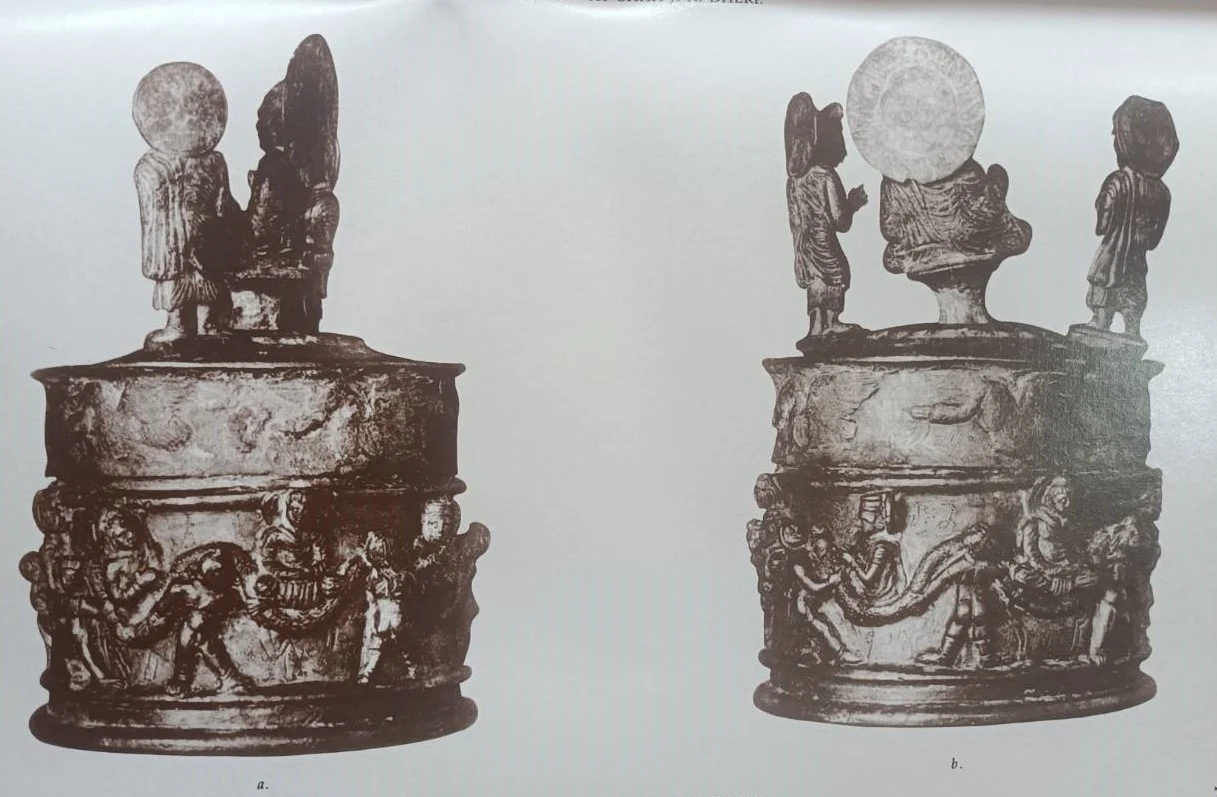This inscription was discovered at the ruins of a Buddhist site known as Shah-Ji-Ki-Dheri Buddhist Site, located in Peshawar, Pakistan. The site was first surveyed in 1853 CE (B.E. 2396) by Alexander Cunningham, a British archaeologist. Later, in 1909 CE (B.E. 2452), it was excavated by Dr. David Brainerd Spooner, an American archaeologist working for the Archaeological Survey of India.
The casket is made of gilded bronze, with a diameter of 18 cm and a height of 12.7 cm. It was enshrined within a stupa discovered at the site. At the center of the casket is a depiction of the Buddha delivering a sermon, flanked by Indra on the left and Brahma on the right.
Language and Script:
The inscription is in a mixture of Prakrit and Sanskrit written in the Kharosthi script, comprising four lines:
Transliterated Kharosthi (selected portions):
𐨐𐨞𐨁𐨮𐨿𐨐𐨤𐨂𐨪𐨅 𐨞𐨒𐨪𐨅 ...
𐨱𐨪𐨗𐨯 𐨐𐨞𐨁 ...
𐨮𐨿𐨐𐨯 𐨬𐨁𐨱𐨪𐨅 ...
𐨀𐨕𐨪𐨿𐨩𐨣 𐨯𐨪𐨿𐨬𐨯𐨿𐨟𐨁𐨬𐨟𐨁𐨣 ...
Translation of the Inscription:
"In the first year of the Great King named Kanishka, in this city, this is a religious offering of ... (text missing). May it be for the welfare and happiness of all sentient beings. This was established by a servant named Agisala, an architect at the Kanishka Vihāra within the Mahasena monastery, and dedicated to the community of Sarvāstivāda teachers."
Current Location:
-
The original casket is currently on display at the Peshawar Museum, Pakistan.
-
A replica has been created and exhibited at the British Museum, London, United Kingdom.
Historical Significance:
Before the excavation, archaeologists, like ordinary people, could not determine exactly what lay beneath the site—only that it was the remains of an ancient structure. It was only after the discovery of this casket and other artifacts that the site was confirmed to be a Buddhist stupa built under the patronage of King Kanishka.
The stupa was dedicated to the Sarvāstivāda monastic order, a school of Buddhism that flourished during the reign of King Kanishka. Notable teachers of this sect included Venerable Parśva and Venerable Vasumitra.
Present Condition of the Site:
Unfortunately, the Shah-Ji-Ki-Dheri site is no longer preserved. After the antiquities were removed and placed in museums, local residents dismantled the remaining structures, converting the land into private property. As a result, all physical remnants of the Buddhist site have been destroyed.



